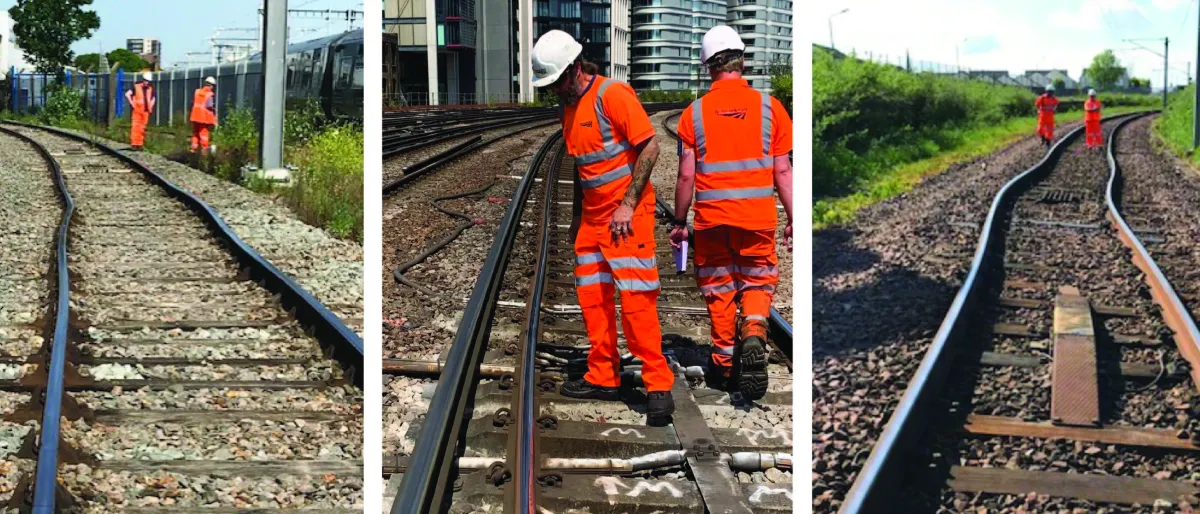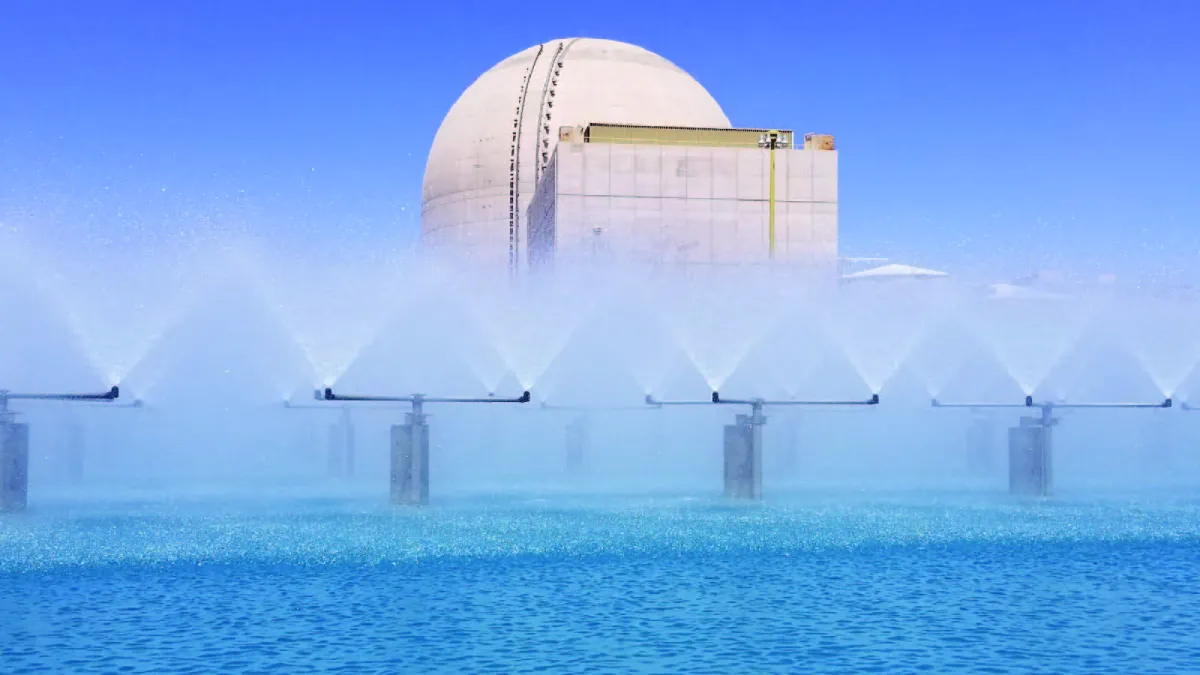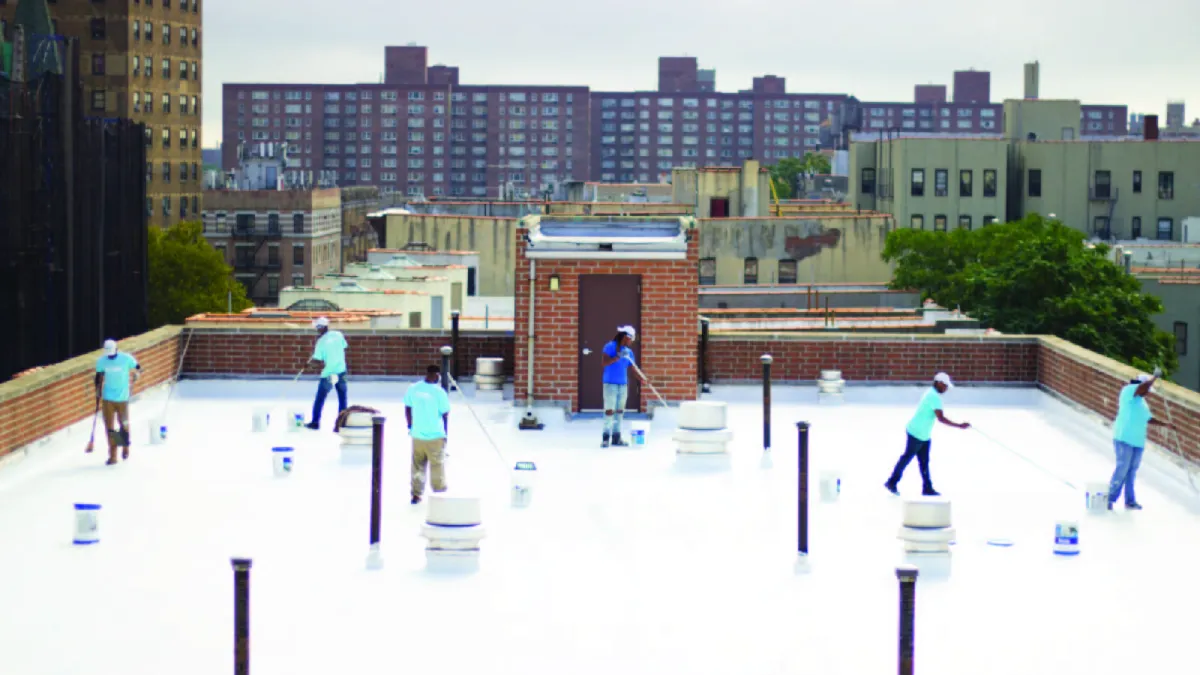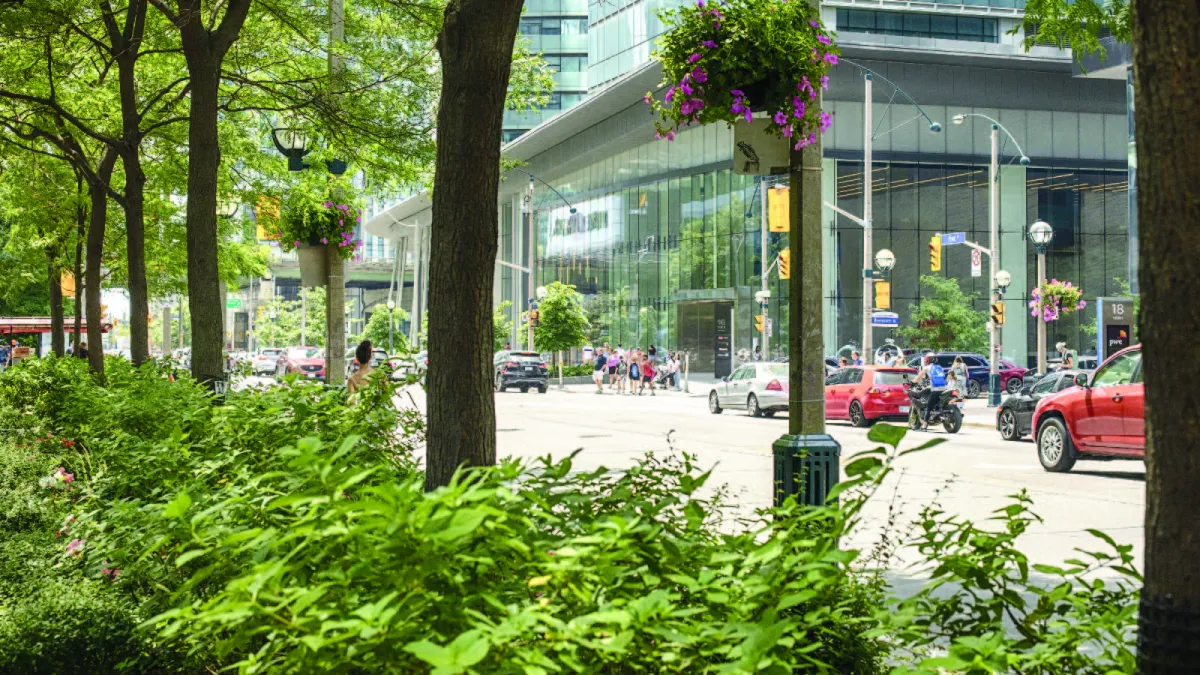How to Address the Economic Costs of Climate Change
Climate change–related weather events will destroy bridges, roads, homes, and even power plants—unless those structures become more resilient.
In July 2022, temperatures across the United Kingdom soared—topping 104°F. Quickly, structures began to literally melt. Airport runways warped, suspending flights. Train tracks bent and caught fire. Workers deployed hoses and white paint to cool roads and tracks. Others wrapped bridges in silver foil to keep the metal from cracking. Commuters in London hurried past signs that simply read, “Avoid traveling—extreme hot weather.”
The 2022 heat wave did more than damage infrastructure; it also caused wildfires and, alongside other heat waves, contributed to nearly three thousand excess deaths in the United Kingdom that year.
The infrastructure damage revealed major vulnerabilities: the United Kingdom could not handle those temperatures. Business ground to a halt. Travel disruptions meant fewer visitors (nearly 25 percent less than the previous month). And increased air conditioner usage strained the energy grid. Overall, the United Kingdom’s yearly price tag for extreme heat is estimated at more than $300 million.
As global temperatures rise and extreme weather events become more common, the United Kingdom’s summer could become a more common story. Climate change is already putting a drag on the global economy in multiple ways. For example:
- Its repercussions threaten the safe and efficient function of critical infrastructure.
- Excessive heat, wildfires, floods, the spread of disease, and other climate-related harms reduce labor productivity.
- Extreme weather events and health threats increasingly disrupt and break supply chains.
Unprepared communities facing inevitable infrastructure challenges—from heatwaves, storms, landslides, and other incidents—are projected to cost the world billions of dollars each year. Those costs, of course, aren’t just financial. The loss of homes and other infrastructure endangers people’s lives.
One major problem is that almost all infrastructure was built for a different time—and a different climate. The United Kingdom’s summer heat waves offer an example of a mild climate unprepared for extreme heat. But other regions face different obstacles. Storms will damage power lines and cause mass outages. Rising sea levels will harm coastal communities, damaging bridges, roads, and homes. Droughts, floods, and melting permafrost change soil conditions and destabilize the foundations on which buildings and critical infrastructure stand. And it’s not just one extreme weather event that causes destruction. Multiple events can strike a particular place, in turn increasing damage and overwhelming communities. Infrastructure shared between countries, such as oil and gas pipelines as well as fiber optic cables (the internet) is also vulnerable, threatening to disrupt economies across the world.
That’s why it’s important to make all infrastructure more resilient to the extremes of a changing climate.
That doesn’t mean giving up on slowing emissions—experts stress that humans cannot simply build themselves out of climate change. But redesigning infrastructure is a necessary step in adapting to an already-changing world.
In this resource, you’ll learn how climate change threatens many critical parts of the world’s economies and explore how to address those dangers.
What infrastructure is under threat from climate change?
Climate change poses new or increased risks to nearly every aspect of the global economy. Let’s explore three main areas where climate change is poised to cause the greatest economic damage: physical infrastructure, energy systems, and labor and supply chains.
How climate change damages the built environment
The built environment encompasses the power plants, bridges, roads, houses, and other structures humans rely on to live. Building and maintaining that environment requires enormous investments of physical and financial resources. Climate change will stress that built environment in ways it was not designed to withstand, threatening massive economic disruption.
Certain transportation structures like roads, runways, and train tracks are particularly vulnerable. High temperatures can turn the asphalt on roads and runways into Play-Doh, causing it to warp. They can also cause steel railways to buckle. Even without extreme events, rising temperatures will increase the gradual wear and tear on infrastructure too, increasing costs over time.
Heat isn’t the only threat. Floods can also damage homes, displacing people and causing food and clean-water shortages as floodwater mixes with raw sewage and other contaminants. After a flash flood hit Jackson, Mississippi, in 2022, a water treatment plant failed. Nearly 150,000 people were soon without clean drinking water. Most of those residents were Black, illustrating how climate-related damage can make already underserved populations more vulnerable. That outsize harm to marginalized or impoverished communities is a global problem. About one in four people live in flood-prone areas. Of that group, 90 percent live in low- and middle-income countries, particularly in South and East Asia.
The effects of climate change on infrastructure will be costly. The Intergovernmental Panel on Climate Change (IPCC) estimated that global infrastructure losses could be as much as $4.2 trillion by 2100 even if countries achieve their Paris Agreement goals. In a high-emissions scenario, the world could see costs as high as $13.8 trillion.
How climate change weakens energy systems
Climate change also affects power plants and transmission lines. Intense heat causes power lines to sag and operate less efficiently, and extreme storms can destroy them entirely. Heat can also limit how much energy power plants can produce. In the summer of 2022, drought lowered water levels in China’s rivers. That reduced the generating capacity of the country’s hydropower plants. In response, factories in a critical manufacturing region shut down temporarily to lessen power demand. In total, the drought is estimated to have cost China $8.4 billion in lost economic activity.
Water, too, threatens damage to critical energy structures. In the United States, many coal and nuclear power plants were built near the coast to provide water for power generation and cooling. Sea-level rise, storms, floods, and other events could damage those plants, shutting off power for the communities they support.
The risks climate change poses to energy systems come at a time when global reliance on electricity is only growing. Extreme weather events can overwhelm demand on already-strained energy systems. In Texas, eleven million people lost power in 2021 following a major temperature drop called the Texas Freeze. The cold caused a surge in electric demand. Power plants then failed, contributing to an estimated $80–$130 billion setback to the Texas economy.
If global energy systems cannot make the upgrades required to meet peoples’ rising electrical needs in light of new climate extremes, customers could face less reliable service and billions of dollars of extra costs annually in the decades to come.
How climate change disrupts labor and supply chains
When it’s hot outside, work becomes more difficult and dangerous. High temperatures make it harder for people to think and put a physical strain on their bodies. That is particularly true for those who work outdoors in, for example, farming or construction. The economic cost of that lost working time can be significant. One 2022 study estimated that hours lost to extreme heat cost $676 billion per year worldwide.
Production problems in one area of the world can cause economic disruption around the globe. In 2011, for example, a 143 percent increase in typical monsoon rainfall caused catastrophic flooding in Thailand, which is a critical manufacturing center for global automotive and electronics industries. The floods caused a months-long shutdown, which resulted in a 2.5 percent decline in world industrial gross domestic product (GDP).
Those challenges aren’t limited to still-developing economies. The power-grid disruption caused by the 2021 Texas Freeze caused three major semiconductor plants to shut down, worsening an already-severe shortage of semiconductors. Oil refining, a major industry in Texas, fell by half. Chemical manufacturing fell by as much as 80 percent, and more than half of total capacity remained offline for weeks. Prices for all those products spiked, measurably contributing to overall inflation that year.
What are the infrastructure costs from climate change?
Whether through property and infrastructure damage or productivity loss and supply-chain disruptions, climate change is already imposing a steep economic price. Those costs will worsen as the climate continues to warm.
One 2021 study projects that the global economy will be 11 to 14 percent smaller by the middle of the twenty-first century than it would have been without climate change. That difference means that millions of people will be leading much poorer lives than they would have otherwise. And, as is common across many climate-change-related setbacks, many of the economic harms are expected to hit poor people the hardest.
Climate change incurs enormous costs. So, policymakers can use that fact to justify spending money to fight climate change. The expense of investing in mitigation and adaptation projects now can be much cheaper than the enormous immediate and future costs of climate change, which those mitigation and adaptation projects can help avoid.
Let’s explore what policymakers can do to fight the fallout of climate change.
Climate adaptation strategies for infrastructure
There are three general approaches to infrastructure adaptations: modifying old resources, relocating them, and building new ones.
Modification means taking already existing infrastructure—like roads, bridges, and buildings—and retrofitting it to handle a new climate.
Modifications take a variety of forms. For roads and runways, modification could entail employing smaller slabs of concrete that better resist heat deformations or researching new, more resilient mixtures of asphalt. Likewise, white reflective paint on rooftops can cool buildings. Ahmedabad, India, reduced heat in homes by 9°F using that strategy.
For many places, modifications that prevent flood damage are the top priority. One strategy is to literally raise buildings by elevating their foundations. Other strategies involve burying infrastructure like power lines to protect them from weather. One country, the Netherlands, has sought to redirect floods rather than control them entirely. They’ve moved the location of their flood walls, diverted water into flood plains, widened rivers, and raised bridges to allow floods to follow their natural courses without harming population centers.
In coastal cities, flood protection can require massive new infrastructure projects. Those include seawalls, flood barriers, and drainage systems. Hong Kong is one of the world’s rainiest cities—subject to intense rain and cyclones. There, engineers have constructed a nearly seven-mile-long drain tunnel, which diverts an estimated one-third of rainfall for northern Hong Kong. The city has three other tunnels, all of which direct water back into the sea.
On top of modifying and building infrastructure, certain countries could have to move some of their infrastructure altogether. That could mean relocating power and water treatment plants to higher elevations to avoid damage from flooding and erosion. It could also entail rerouting transportation infrastructure. In California, for example, policymakers are considering plans to move coastal railway lines further inland before eroding soil crumbles beneath them.
Many countries are already implementing and innovating adaptations that can protect against some of the worst effects of climate change. Still, progress is slow. The IPCC has found that current adaptation efforts are too modest, so more action needs to be taken more quickly. That is especially true in developing countries, which often face greater climate risks with fewer resources to address them.
Ultimately, protecting against the economic damage of climate change will require innovative engineering solutions, governments willing to fund them, and international systems willing to provide financial support to countries that need it. The adaptations necessary to protect the world’s infrastructure aren’t cheap. But whatever the price tag, experts agree on one thing: it would be more expensive to do nothing.







